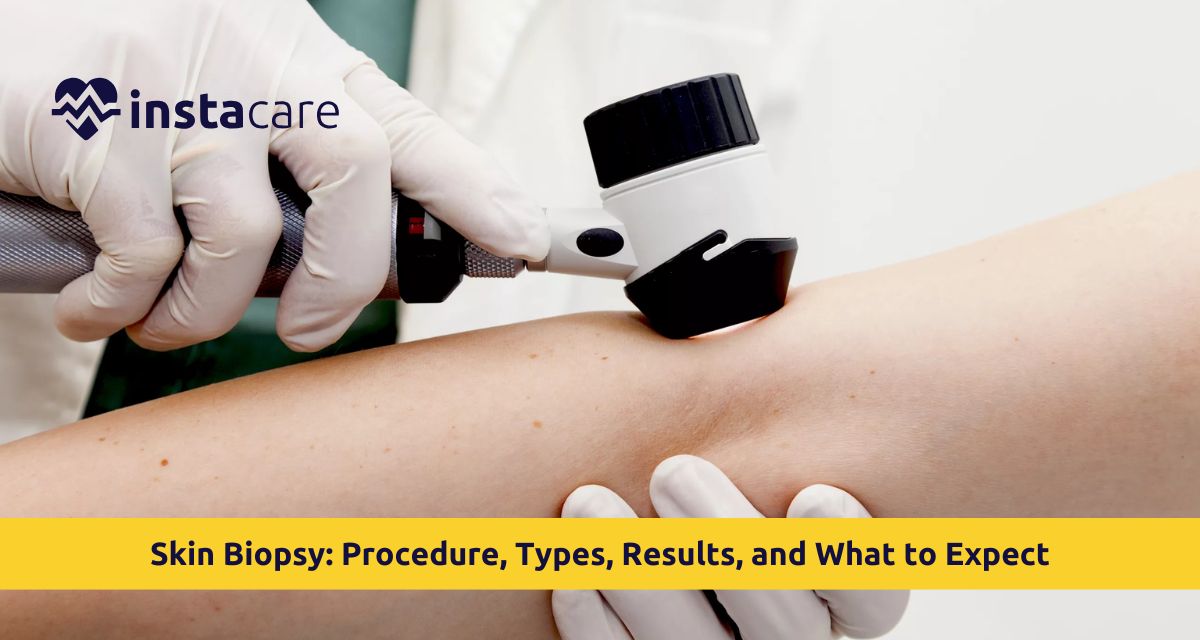What is a Skin Biopsy?
Why a Skin Biopsy Would Be Done?
- Skin Cancer Diagnosis: To exclude or diagnose skin cancers such as melanoma, squamous cell carcinoma, or basal cell carcinoma.
- Skin Lesion Examination: For examination of moles, warts, or other irregular lesions.
- Detection of Infection: To detect bacterial, viral, or fungal infections on the skin surface.
- Measurement of Inflammatory Disease: To diagnose inflammatory conditions such as lupus, eczema, or psoriasis.
- Diagnosis of Rash: For the diagnosis of the underlying cause of the long-standing or cryptic rash.
Preparation of Skin Biopsy
- Tell Your Doctor: Let your doctor know if you take any medications, especially blood thinners like aspirin or warfarin, that increase your risk of bleeding.
- Avoid: Do not apply creams, lotions, or make-up to unbiosied skin on the day of the biopsy.
- Dress in comfort: Loose and comfortable clothes that won't chafe over the biopsy area.
- Wear: Inform your doctor if there's a known allergy, especially local anesthetic or antiseptics.
- No fasting is necessary: Nothing by mouth, fluids, or anything else unless directed.
Skin Biopsy Procedure
- Area Sterilization: Antiseptic solution is applied over the infected skin area so that it will not become infected.
- Administration of Anesthesia: A local anesthetic is administered so that the area will become numb and no part of pain is felt when performing it.
- Removal of Tissue Sample: Depending on what the lesion type is, the doctor will remove one of the following discussed biopsies:
- Shave Biopsy: Removal of a skin's top layer, most useful in elevating lesions.
- Punch Biopsy: Using a cylindrical instrument to shave off a patch of skin in a cylindrical shape, most useful in diagnosis of rash or inflammation.
- Excisional Biopsy: Complete removal of the lesion or infected tissue, typically a presumed skin cancer case.
- Bleeding Control: Pressure to control any bleeding and, in some cases, there will be a chemical or electrical agent used.
- Wound Closure: Suturing or spontaneous wound closure based on biopsy size and type.
- Banding of the Wound: Wound covering to protect against infection.
What to Expect After the Skin Biopsy?
- Pain Relief: Mild soreness or tenderness is eased by over-the-counter medication such as acetaminophen.
- Wound Care: Dry and keep clean. Remove all dressings and apply ointment as your doctor has instructed.
- Activity Limitation: Do not lift, bend, or do strenuous activity that tugs at the area where the biopsy was performed until it heals.
- Infection Monitoring: Check for swelling, redness, pus, or fever and report to your doctor.
Interpreting Skin Biopsy Results
- Normal: No cancer cells are seen, i.e., normal skin tissue.
- Benign: Benign growth such as wart or mole.
- Malignant: There are malignant cancer cells that require treatment or surgery.
- Inconclusive: Additional tests are ordered if report is inconclusive.
Diseases Diagnosed by Skin Biopsy
- Skin Cancers: Basal cell carcinoma, squamous cell carcinoma, and melanoma.
- Inflammatory Dermatoses: Psoriasis, eczema, and dermatitis.
- Infectious Diseases: Fungal infection, bacterial infection, and viral warts.
- Autoimmune Disorders: Such as pemphigus and lupus.
- Benign Skin Tissue Tumours: Such as cysts, lipomas, and moles.
Punch Biopsy and Skin Biopsy
Shave Biopsy:
- Only trains the superficial skin layers (epidermis and a superficial level of dermis).
- Used mostly on uncolored lesions or small raised lesions.
- Can be done relatively fast without sutures.
- Less scarring and faster recovery.
Punch Biopsy:
- Removed by making a small round full-thickness skin core by cutting it out with a punch instrument.
- To diagnose other underlying conditions such as infection, rashes, or autoimmune disease.
- On average, one or two stitches will be enough to close the wound.
- Would take longer to heal and may produce more visible scarring.
The technique of the two differs with the nature of the character, lesion size, and need for diagnosis. The patient is clinicially diagnosed by the dermatologist and the most appropriate method of Dermatologist skin biopsy is prescribed to make a proper diagnosis.
Cost of Skin Biopsy in Pakistan
- Shave Biopsy: PKR 3,000 to PKR 5,000.
- Punch Biopsy: PKR 4,000 to PKR 6,500.
- Excisional Biopsy: PKR 5,000 to 10,000.
- Add Laboratory Test: PKR 2,000 to 4,000.

